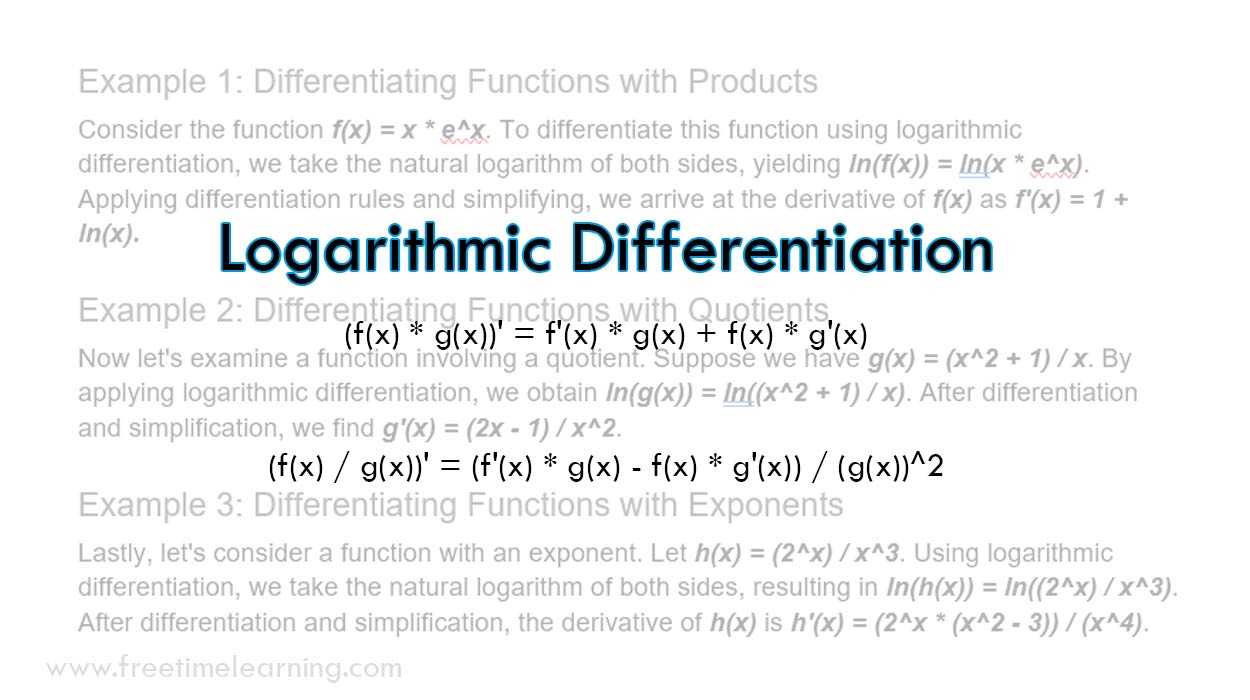Practical Applications of Logarithmic Differentiation
Logarithmic differentiation finds practical applications in various fields of mathematics and beyond. Some common applications include:
Solving Complex Equations :
Logarithmic differentiation can help solve equations involving complex functions that are difficult to differentiate using traditional methods. By simplifying the equation through logarithmic differentiation, we can often find solutions more effectively.
Evaluating Limits :
Limits involving indeterminate forms, such as 0/0 or ∞/∞, can be evaluated using logarithmic differentiation. By applying logarithmic differentiation and utilizing the properties of logarithms, we can transform the expression and simplify the limit calculation.
Analyzing Growth Rates :
When analyzing the growth rates of functions, logarithmic differentiation provides insights into how functions change relative to their inputs. It allows us to identify whether a function grows or decays faster than another function, providing valuable information for modeling and predictions.
Common Mistakes to Avoid
While logarithmic differentiation can be a powerful technique, there are some common mistakes to watch out for:
Misapplying Logarithmic Rules :
Applying logarithmic rules incorrectly can lead to errors in the differentiation process. To begin logarithmic differentiation, we can start by taking the natural logarithm (ln) of both sides of the equation.
Forgetting to Simplify :
Forgetting to simplify the expression after differentiating each term can result in unnecessarily
complex derivatives rules. Always simplify the expression to its most reduced form to obtain accurate results.
Not Checking for Extraneous Solutions :
When solving equations using logarithmic differentiation, it's crucial to check for extraneous solutions. Extraneous solutions are solutions that satisfy the derived equation but not the original equation. These solutions can arise due to the nature of logarithms and should be identified and excluded from the final answer.

